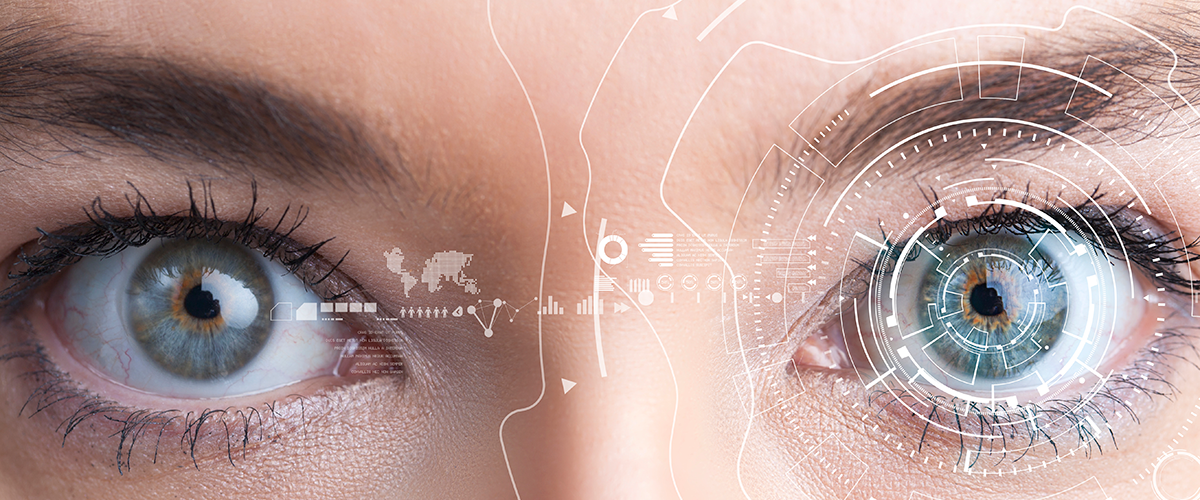
Whether you're interested in tripping on psilocybin or you're just interested in the topic, you've come to the right place. In this article, I'll cover everything you might need (or want) to know about psilocybin – and, by extension, the "magic mushrooms" that psilocybin comes from. To begin with, what exactly is a magic mushroom?
The term "magic mushroom" actually refers to hundreds of different psilocybin-containing species of fungi, not just one. Interestingly, not all of the mushrooms that contain psilocybin are closely related. Instead, they can come from multiple genera. The three most common types of magic mushrooms are Amanita muscaria, Claviceps purpurea, and many different specific species of mushroom from the aptly named Psilocybe genus.

Psilocybin is the chemical compound that is responsible for the magic mushrooms' psychoactive effects, although it doesn't take effect directly. Before it can bind to the body's neurotransmitters, the body converts psilocybin into psilocin. Much like the other "classic" psychedelics – LSD (acid) and mescaline – psilocin is structurally quite similar to the natural neurotransmitter serotonin. This similarity is what allows the psilocin to bind to the 5-HT2A receptors that are found throughout the central nervous system.
Of course, those receptors are only meant to bind with serotonin. When they bind with psilocin instead of serotonin, the compound's psychedelic effects can be felt. The subjective effects can be explained, but scientists are still unclear as to how exactly the substance causes them. However, the going theory is that psilocybin suppresses the parts of the brain that are responsible for filtering the information that we take in via our senses. This would explain the heightened sensations that many users describe, and could explain some of the psychedelic, reality-bending changes to perception.
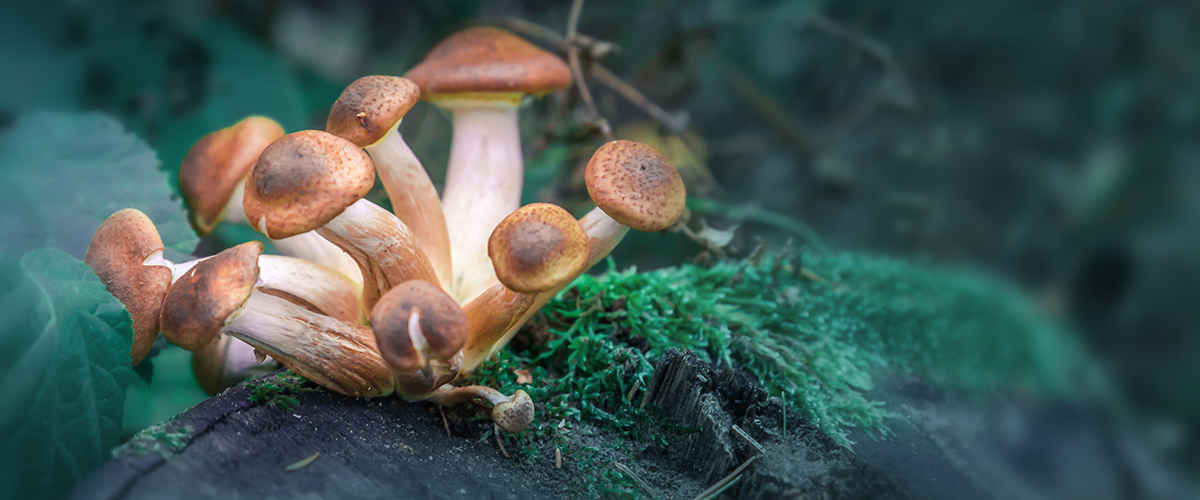
Rock carvings in the mountain ranges of Algeria seem to depict the use of magic mushrooms. One carving shows two masked humans holding mushrooms in their right hands, with dotted lines connecting the mushrooms to the tops of their heads. To some researchers, this seems to suggest a knowledge of the fungus' psychoactive properties. Another carving seems to show a huge, masked, god-like being with mushrooms sprouting from his hands, arms, back, and legs. If these are, indeed, evidence of magic mushroom use, then humanity has been using them for quite some time – historians have estimated that those carvings were made between 4,000 and 7,000 years BCE.
There is evidence that in Central America, thousands of years later (perhaps around 500-1000 years BCE), the peoples of modern-day Mexico and Guatemala used psilocybin mushrooms as entheogens – tools to help their shamans commune with the spiritual world, and gain insights that would be inaccessible to others. The West didn't know much about the mushrooms until much later when R. Gordon Wasson published an article about his experience with magic mushrooms in Mexico in 1955. In 1960, Timothy Leary began conducting experiments using psilocybin. Unfortunately, this lasted only three years, as in 1963 Leary was fired from Harvard and further psilocybin experiments were disallowed. In 1968, the United States banned psilocybin completely on a federal level… but more on that later.
It's also possible that humanity's history of psilocybin use goes back even further. It might even predate humanity – at least, the version of humanity that we're familiar with. One of the most vocal advocates of psilocybin (as well as other entheogens) was a man named Terence McKenna – an ethnobotanist, mystic, and psychonaut. In his 1993 book Food of the Gods, he proposed his “Stoned Ape” theory of human evolution.
This theory suggests that magic mushrooms are actually partly responsible for the latest phase of human evolution. According to the theory, Homo erectus began to migrate north when the desertification of Africa forced them to seek out a more hospitable environment. At this point, we know that the brains of Homo erectus began to evolve rapidly, but we're not certain why. McKenna's theory is that on their way north, Homo erectus traveled behind herds of cattle, which were also seeking a more suitable environment. Homo erectus would have seen Psilocybe Cubensis mushrooms growing in the cattle dung. Then, as food grew scarce, they probably would have eaten them. Then, the way McKenna phrased it, "we ate our way to higher consciousness".
According to McKenna, the psilocybin would have given these early humans a heightened sense of vision, as well as a heightened sex drive. Psilocybin also stimulates the part of the brain that creates languages. Better eyesight would have led to more success in hunting, and a higher sex drive leads to a higher rate of procreation. Both of these things would have helped Homo erectus spread quickly and prosper. There's no proof yet – and there might never be any – but it's a plausible theory.
As for the idea that psilocybin helped Homo erectus develop language, that's even easier to believe. Psilocybin is known to “decrease the interconnectivity of integration hubs in the brain.” In other words, it lets parts of the brain that are normally separate to talk to each other, making normally impossible connections. Perhaps one of those unusual connections led to our ancestors developing language.
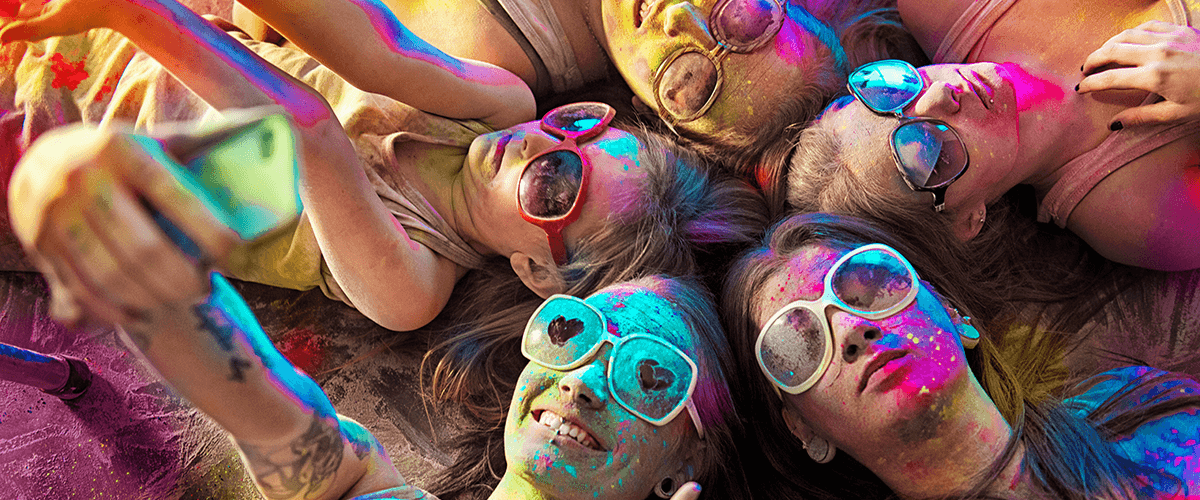
As far as physiological and physical effects go, psilocybin causes only minor changes to the body's natural state. Psilocybin can cause some minor dizziness, fatigue, and nausea, but these effects are not usually significant. During a trip, the user's pupils will become dilated, which is part of why colors appear so much brighter during the trip. Psilocybin has also been shown to briefly increase blood pressure. It could also cause a small increase in the body's levels of TSH (thyroid-stimulating hormone), prolactin, cortisol, and adrenocorticotropic hormone. However, all of these changes were minor during the study and returned to normal within five hours.
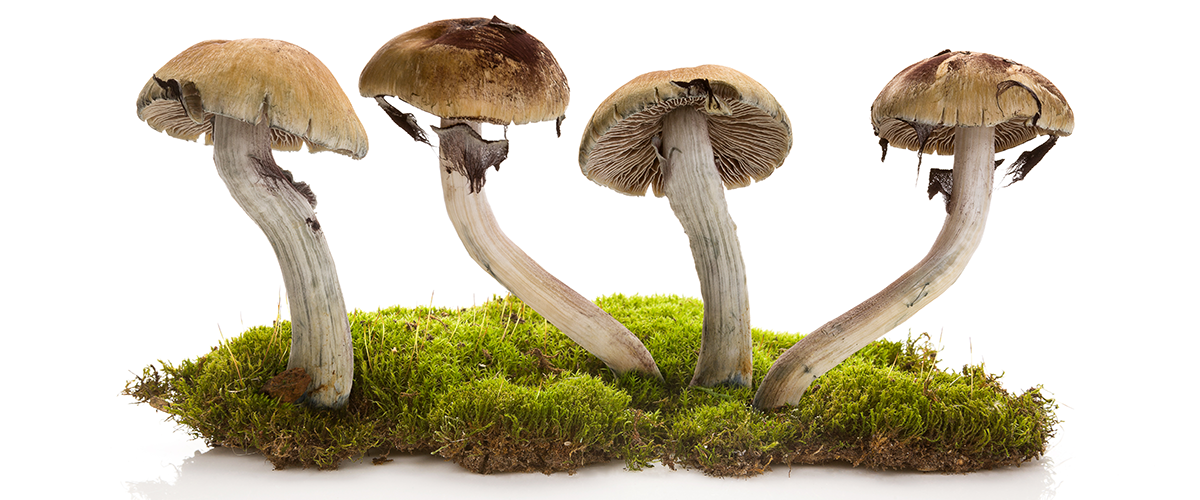
A psilocybin trip can be an intense, eye-opening, sometimes transcendent experience. Many users describe their trips as having an unreal or hyper-real dreamlike quality – which makes sense, as findings from Imperial College London have shown that individuals' brain activity while tripping on psilocybin is very similar to the brain's activity while dreaming.
The most obvious changes caused by psilocybin are changes to the sense that we rely on most heavily during our day-to-day life – our sight. Visual distortions caused by psilocybin include walls that appear to move in and out as if they're "breathing." You may also see colors change and become deeper and brighter. You may also see patterns appear in whatever you're looking at, as your brain attempts to "organize" visual stimuli. These can be geometric patterns, or mirroring – for example, staring at the edge of a forest, you may notice that every tree looks the same, as if a single tree has been copy-pasted dozens of times.
You may notice that other senses – such as taste, touch, and hearing – will also be altered. Time may appear to move extremely slowly, or extremely quickly. Psilocybin can cause you to experience heightened emotions, and can reduce activity in the parts of the brain that are involved with our sense of self. You may also experience a heightened sense of empathy As well as a deeper sense of oneness and connectedness with other people and with the world around you. When comparing psilocybin to LSD in Psychedelics Encyclopedia, Peter Stafford wrote that the experience of psilocybin "seems to be warmer, not as forceful and less isolating. It tends to build connections between people, who are generally much more in communication than when they use LSD." These thoughts are mirrored by anecdotal evidence from many other users, who often see magic mushrooms as a softer, more easily controlled, and enjoyed experience than LSD.
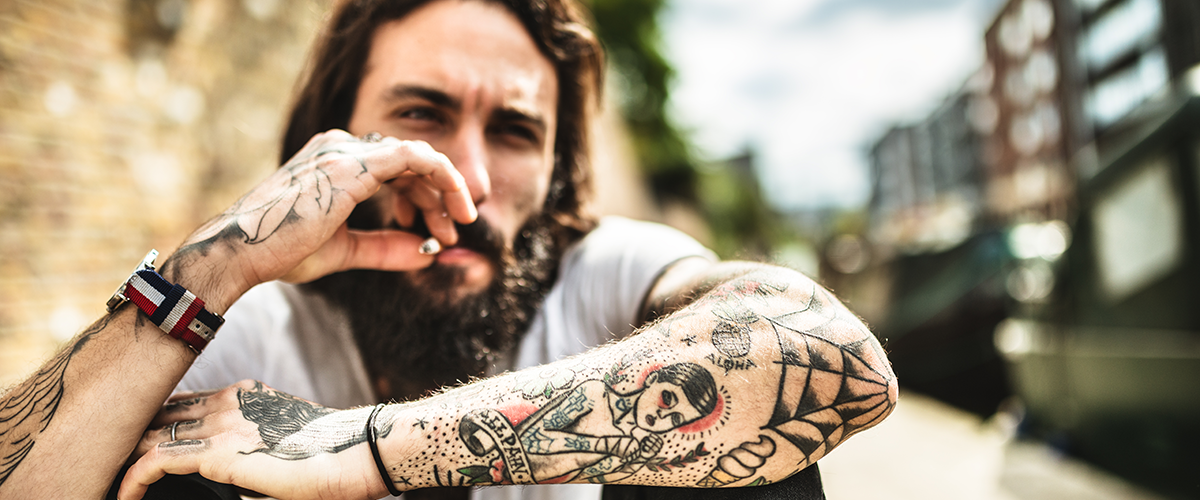
No drug is completely without risk. However, according to one research article, psilocybin is the third safest recreationally-used drug. It also sends less people to the emergency room than either alcohol or marijuana, the two most popular recreational drugs. Many of the dangers can be reduced in severity and chance of occurrence by making sure you're in a calm, peaceful set and setting – but more on that later.
The short-term risks of psilocybin use include anxiety, the chance of a bad trip, impaired thinking, and, in some cases, a psychotic episode. However, all of these things will disappear when the trip tapers off. Anxiety is always a potential side effect, but in many cases, it can be alleviated by moving to a different room, listening to some calming music, or participating in another activity to reduce your stress level. "Impaired thinking" is a bit of a no-brainer, of course – if you're experiencing the whole world slightly (or significantly) differently than normal, so of course you'll make decisions slightly differently. This is another reason why it's important to be in a safe, familiar environment during a trip.
a psilocybin trip can trigger a psychotic episode, but in healthy individuals, this is fairly unlikely. Even if it does occur, it should end along with the trip. However, there is one group of people who should avoid psilocybin and magic mushrooms: anyone with a family history of schizophrenia, bipolar disorder, or any other psychotic disorder. For these individuals, a bad trip has a higher chance of triggering a temporary or persistent psychosis, and can even activate schizophrenia that has not manifested itself yet. It is recommended that anyone with a family history of any psychotic disorders avoid psilocybin (and other psychedelics) completely.
There is some chance of developing Hallucinogen Persisting Perception Disorder, or HPPD. This disorder is essentially an ongoing, usually intermittent alteration of visual perception following the use of hallucinogens. This usually amounts to small distortions, such as walls that appear to breathe for a few moments before returning to normal. Fortunately, this is a relatively rare disorder, with a prevalence of only 0.12% among psychedelic users according to one study. HPPD seems to be more common among people who use psychedelics extensively, rather than just occasionally and is far more common in users of LSD than in users of psilocybin.
The most common (though still not likely) risk of psilocybin use is the risk of a bad trip. These are characterized by severe anxiety, panic, and the temporary loss of the user's ability to connect with reality. There can be a feeling that the world isn't real. Feeling that you're living in a dream, and a sense of disconnection from reality and even from yourself. These effects are known as derealization and depersonalization, respectively. Fortunately, they will go away when the trip fades.
Psychedelic experiences can be intense, profound, and can take some time afterward to process – whether the experience is positive or negative. If you experience a bad trip, keep this in mind. Some negative thoughts may persist for weeks or even months, but most of them do resolve over time. Most people who experience a bad trip describe it as a positive experience in the long term. Psychedelics allow you to experience new things and think new thoughts. For this reason, many users prefer the term "challenging trip" rather than "bad trip," because even a difficult experience can teach valuable lessons. Even so, it's best to avoid a "challenging" trip if you can, so… on to the next section.
Psilocybin may be one of the safest drugs – and it's certainly one of the safest hallucinogens – but even so, it's important to use it safely. If your family history is clear of any disorders that may be exacerbated by psilocybin use, the next step is to make sure you aren't taking any medications that interact with psilocybin. After that, safety generally comes down to dosage, preparation, and environment.
If you are considering taking psilocybin or magic mushrooms for the first time, start with a small dose. TripSafe recommends 0.8 grams of dried mushrooms to begin with. However, note that in the mushrooms themselves, psilocybin may not be distributed evenly throughout the stalk and the cap, so you may end up taking slightly more or less than you intended. If you want a more accurate dosage, you may want to use magic truffles or sclerotia instead. These are a different part of the fungal body of the same plant, and they have a consistent distribution of psilocybin. All you have to do is weigh them, and you'll know exactly how much you're taking.
Second, educate yourself before your trip. Some people recommend going into the experience blind, with no expectations, but that's not the best plan. It has been found that when participating in studies, even individuals with no experience in psychedelics can safely take high doses of psilocybin if they are prepared ahead of time for the drug's effects. This makes sense – if strange things are happening and you're unprepared, it can be alarming. Even terrifying. However, in many cases, if you are able to recognize those things as temporary effects of the drug, it's possible to relax and let them pass.
Finally, set and setting. "Set," in this context, stands for "mindset." You should be in a healthy mindset before you take psilocybin, and it should be fairly consistent. If you often experience a great deal of stress, anxiety, or depression, but then have a few good days, it might still be a bad time to trip. Wait until you're in a positive headspace that feels consistent and stable. Psilocybin heightens empathy and intensifies emotions, so you'll want to be unburdened from persistently negative emotions before you embark on a trip. Have someone with you while you trip, and make sure they're willing to be there for the whole thing. This "trip-sitter" should be someone you trust, someone you're familiar with, and someone who has some experience with psychedelics so that they'll understand (to some degree) what you are experiencing.
Now, the setting. This part is crucial to a safe trip. A trip can be highly stimulating, as more pieces of your brain are connected than they are normally, and more sensory information is reaching your brain. This can be fascinating and enjoyable, but it can also be too much. Some experienced users enjoy tripping at music festivals and other similarly hectic locations. This is their choice to make, but it is certainly not recommended for new users. If you are surrounded by lights, sounds, and strangers, there's nowhere to go if the trip starts to feel like it's too heavy. For this reason, you should take psilocybin (if you take it at all) in a pleasant, safe, and familiar setting, around people you know well. Keep headphones and some sunglasses with you, too – if you feel overstimulated, you can use both to block out enough of the outside world to regain your bearings.
It's also worth mentioning that the full "trip experience" encompasses more than just the trip. It also encompasses the weeks or months afterward, as you look back on the experience and assimilate it into your sober life. It is recommended to wait to trip again until you have completely "digested" your previous trip.
Some users state that drinking small amounts of alcohol, such as a beer or two, can help lessen any anxiety that accompanies the trip. Benzodiazepines can counteract a psilocybin trip, softening the psychoactive effects. For this reason, some users keep benzodiazepines such as Xanax on hand in case of a bad trip. Marijuana can heighten psilocybin's effects, but anecdotal evidence suggests that it can also increase anxiety, especially if it's a high-THC strain, which can increase the likelihood of a more challenging trip. In any case, psilocybin's effects when combined with other drugs have not been thoroughly researched, so it is advisable to avoid mixing psilocybin with other substances.
Currently, psilocybin (and psilocybin-containing mushrooms or sclerotia) are illegal in most of the West. There is a strange grey area in Canada and the United States, where grow kits, spores, and mycelium are legal, but it is illegal to possess the psilocybin-containing parts of the fungus. The exception is Denver, Colorado, which has recently decriminalized psilocybin mushrooms. In Western Europe, Spain, Portugal, Italy, Austria, and Czechia have decriminalized the mushrooms. In the Netherlands, magic truffles are completely legal, but the mushrooms are not. Psilocybin has been listed as a Schedule I drug by the UN since 1971, but as research into medical use continues, this may change in the future. If you are curious about trying psilocybin, be aware of the drug's legal status in your area.
In the late 90s, scientific interest in psilocybin experienced a resurgence, and research slowly resumed. Now, the drug is being studied as a potential treatment for depression and anxiety, as well as a handful of other mental health conditions. This is largely because of psilocybin's ability to increase neuroplasticity, as well as temporarily make the mind more malleable. Most of the time, our brains maintain an equilibrium between order and chaos. For the duration of a trip, psilocybin tips that balance toward chaos. That may sound alarming, but that temporary chaos is exactly what scientists hope will make psilocybin an effective treatment for mental health disorders like depression.
The trip temporarily throws the user's mind into disorder, but it will settle back into a stable form when the trip ends. For this reason, a psychedelic trip could have the potential to "reset" an unhealthy brain. The trip may allow users to step back and examine unhealthy or harmful patterns of thought, examine the beliefs behind those patterns from a new perspective, and then (hopefully, to some extent) break free from those patterns. This could potentially help treat the cause of these mental diseases, rather than just controlling the symptoms. Psilocybin shows promise, and within five years, it may be used legally in hospitals as a treatment for depression.